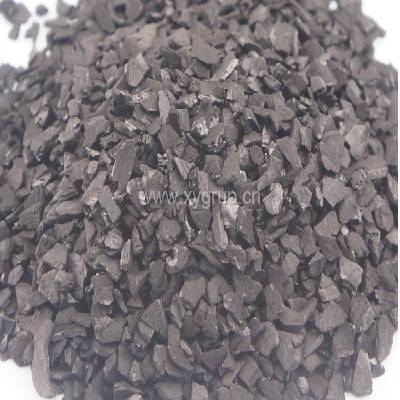Why are coconut shell activated carbon filters used for water treatment? Coconut Shell Activated Carbon is made of high-quality coconut shell through a series of production processes. Coconut shell activated carbon is black in appearance and granular. It has the advantages of developed pores, good adsorption performance, high strength, easy regeneration, economy and durability. The products are mainly used for the purification, decolorization, dechlorination, and deodorization of drinking water, purified water, wine, beverages, and industrial sewage; it can also be used for the desulfurization of the oil refining industry. The adsorption process and principle of action involved in water treatment are more complex, so there are many influencing factors. It is mainly related to the nature of coconut shell activated carbon, the nature of pollutants in the water, the process principle of coconut shell activated carbon treatment, and the selected operating parameters and operating conditions.
The properties of coconut shell activated carbon have three requirements for water treatment: large adsorption capacity, fast adsorption speed and good mechanical strength. In addition to other external conditions, the adsorption capacity of coconut shell activated carbon is mainly related to the specific surface of coconut shell activated carbon; the adsorption speed is mainly related to the particle size and the pore distribution of coconut shell activated carbon. Coconut shell activated carbon for water treatment requires more developed transition pores. Conducive to the diffusion of adsorbate into the micropores. The smaller the particle size of Shell Based Activated Carbon, the faster the adsorption speed, but the head loss will increase, generally in the range of 8-30 mesh. The mechanical abrasion resistance of coconut shell activated carbon affects the service life of coconut shell activated carbon.

Shell Based Activated Carbon
However, by using coconut shell activated carbon, which can maintain considerable adsorption capacity in a wet state, it can still be used for recycling under conditions that are not suitable for recycling so far, and it can also save water vapor. Especially in the recovery of solvents that may generate heat due to oxidation and decomposition. By humidifying the adsorbed gas, the temperature of the coconut shell activated carbon layer can be increased. The occurrence of reaction, the prevention of fire, and the collection of ketone solvents, this has become an important condition for choosing coconut shell activated carbon. The penetration curve of dry coconut shell activated carbon and wet coconut shell activated carbon when adsorbing acetone is different; the breakthrough time is also one of the indexes of the adsorption performance of coconut shell activated carbon.
The nature of pollutants is very different in the adsorption capacity of the same Granular Activated Carbons for different pollutants. Due to differences in the solubility, molecular structure, polarity and concentration of pollutants in water, the adsorption capacity of coconut shell activated carbon varies greatly. The temperature is an exothermic reaction due to the adsorption process, and the adsorption heat is small during liquid phase adsorption. When coconut shell activated carbon is used to treat water, the temperature has no significant effect on adsorption. When the coexistence of multi-component pollutants is applied to water treatment by adsorption, usually the water is not a single pollutant, but a mixture of multi-component pollutants. During adsorption, they can be co-adsorbed to promote or interfere with each other. In general, the respective adsorption capacity of multi-component adsorption is lower than that of single-component adsorption. Adsorption operating conditions Because the external diffusion rate has an effect on the adsorption when the coconut shell activated carbon is adsorbed in the liquid phase, the form of the adsorption device and the contact time have an impact on the adsorption effect.
Previous: More than 20000 rolls of stainless steel welded wire mesh in stock for sale
Next: Aluminum Wire Mesh
Copyright:@2020-2021
Comments Please sign in or sign up to post.
0
0 of 500 characters used